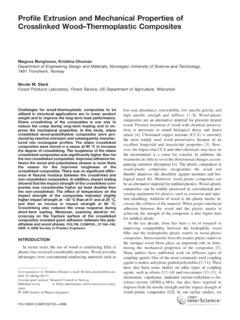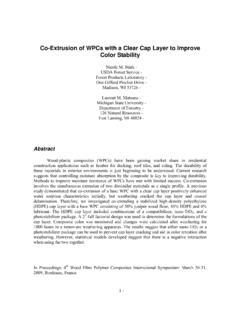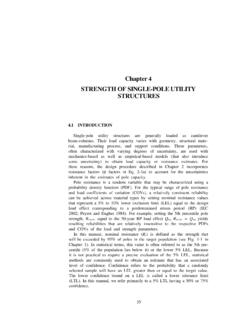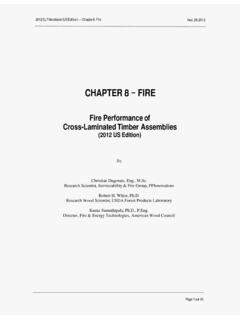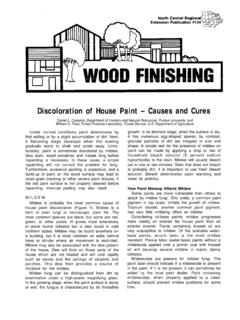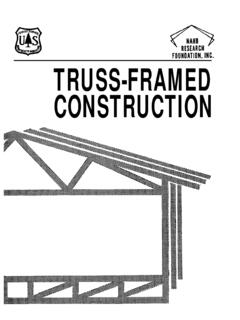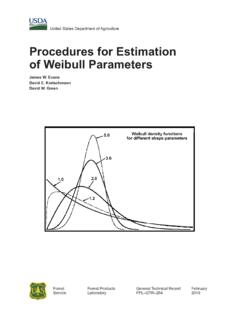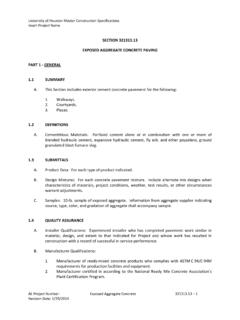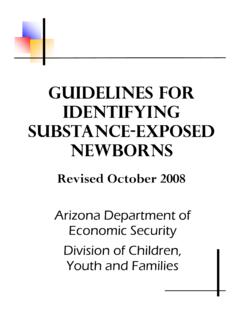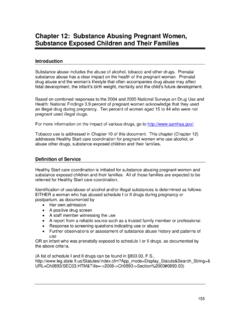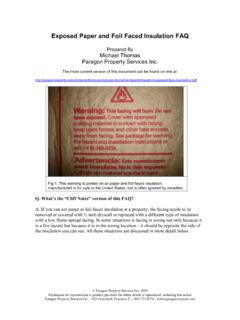Transcription of Fire Resistance of Exposed Wood Members
1 WOOD & fire SAFETY 337 fire Resistance OF Exposed WOOD Members Robert H. WHITE Abstract fire Resistance data on Exposed wood beams and columns are plentiful, but few studies have been done on Exposed wood Members in tension and in decks. To provide data to verify the application of a new calculation procedure, a limited series of fire Resistance tests were conducted on wood Members loaded in tension and on Exposed wood decks. Key words: wood, fire Resistance , decks, tension INTRODUCTION In the United States, large Exposed wood Members were traditionally used in a type of construc- tion known as heavy timber construction.
2 In U. S. building codes, such buildings are required to have concrete or masonry exterior walls and wood Members of specified minimum dimensions. With minimum dimensions specified, no fire Resistance ratings are required for large wood Members . As the demand for large wood Members in other types of construction increased, the wood industry promulgated a calculation procedure for determining the fire Resistance rating of Exposed wood beams and columns (American Institute of Timber Construction 1984, National Evaluation Board 1984). This procedure was based on the equations of T. T. Lie (Lie 1977) that had previously been adopted in Canada.
3 While T. T. Lie s design equations provided for simple calculation of the fire rating of beams and columns based on their dimensions and the load factor, the black box nature of the design equations prevented any adjustment for other member types, loading conditions, or fire expo- sures. The column equations were also based on separate equations for short and long columns. With the introduction of a single column equation in the National Design Specifications (NDS) for Wood Construction, new procedures were developed by the American Forest & Paper Association (AF&PA) for calculating fire Resistance of Exposed wood Members and incorporated within the 2001 NDS (AF&PA 2001).
4 The new mechanics-based design method, or NDS method, is discussed in Technical Report 10 of AF&PA (2003) and an article by Douglas (1999). The NDS procedure is similar to the simplified effective cross-section method in the European Committee for Standardization (CEN) Eurocode 5 (CEN 1994, White 2002). With explicit equations for the residual fire Resistance of wood Members , these equations can be applied to other member types and loading conditions, and the charring rate can be adjusted for specific wood products or fire scenarios. To gain acceptance of the new procedures for tensile Members , the USDA Forest Service Forest Products Laboratory (FPL) conducted a series of fire Resistance tests of Exposed wood Members loaded in tension.
5 The fire Resistance ratings of heavy timber decks must often be established. Such information is often requested from architects and builders involved in renovating old mill construction buildings, particularly on the east coast of the United States. The renovations often involve mixed occupancies or other changes that result in fire -rated walls and floors being required. Two non-load-bearing heavy timber decks were tested as part of an initial effort to verify procedures for establishing fire Resistance ratings of heavy timber decks. 338 WOOD & fire SAFETY CALCULATION PROCEDURES For an Exposed wood member, the fire Resistance rating is the time for structural failure when subjected to the standard fire exposure.
6 In the United States, the standard fire Resistance test is ASTM E 119 (ASTM 2000). The ASTM E 119 test method is similar to the ISO 834 test standard of the International Organization for Standardization (ISO 1999). Differences include the method of meas- uring fire exposure temperatures and specifications for the furnace pressure. As the wood member is Exposed to fire , charring reduces the cross section of the member. The residual structural capacity is also affected by the elevated temperature gradient within the uncharred wood (Janssens and White 1994). As discussed in Eurocode 5 and by White (2002), three general procedures can be used for calculating the residual structural capacity of a fire - Exposed structural member.
7 The most general and complicated approach is to assume that the uncharred region of the member consists of layers or elements with different strength and stiffness properties based on their temperatures and moisture contents. In one simplified approach, the entire residual cross section is assumed to have strength and stiffness values that are fractions of their room temperature values. In a second simplified approach, the residual cross section is further reduced beyond that of the expected actual char depth. In this effective cross-sectional area method, the residual structural capacity of this reduced section is calculated using room-temperature property values.
8 In Eurocode 5, char depth is increased by 7 mm. In their fire endurance model for glued laminated beams (Bender and others 1985), Schaffer and others (1986) used an equivalent zero-strength layer thickness of mm ( in.). This effective cross- sectional area method is used in the new NDS methodology (AF&PA 2001, 2003). The NDS method uses strength values at ambient temperatures and an increased char rate to account for reduced strength and stiffness properties and accelerated charring at the corners. The increase in the char depth is 20 % over that experimentally observed in ASTM E 119 fire tests.
9 Thus, the effective char rate is given by where eff is effective char rate adjusted for exposure time t, nominal char rate, linear char rate based on 1-h exposure, and n t exposure time. A nominal char rate n = 38 mm/h ( in/h, mm/min) is normally assumed. Thus, the effective char depth at 1 h is 46 mm ( in.), and the equivalent zero-strength layer thickness is 8 mm ( in.). Equation (1) also incorporates the nonlinear charring model of White and Nordheim (1992). The charring of composite wood products for this nonlinear model is discussed by White (2000).
10 In the Eurocode 5, the char depth is adjusted only for times less than 20 min. Using Equation (1), the dimensions of the Members are reduced for surfaces that are Exposed to the standard fire exposure. Based on the reduced sections, the ultimate residual strength properties of the charred member at time t are calculated using room-temperature allowable design stress values adjusted by average ultimate strength adjustment factors. The failure time is the time when the applied load exceeds the calculated average ultimate residual strength of the charred member for time t. The AF&PA documents (AF&PA 200 1, 2003) address only structural requirements for fire resist- ance of timber decks.
